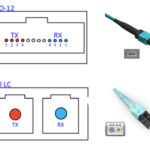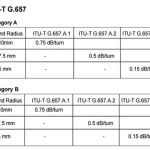In early 2021, Broadcom’s CEO, Hock Tan, unveiled Co-Packaged Optics (CPO) at the J.P. Morgan Auto/Tech Forum, marking a paradigm shift in networking technology. Since then, CPO has swiftly transitioned from a conceptual vision to tangible demonstrations, exemplified by Broadcom’s recent showcase of a 6.4 Tbps optics integration at OFC 2025, tailored for custom AI accelerators.
CPO integrates optical transceivers directly within the same package as switch ASICs or compute processors, eliminating the need for external pluggable transceivers. This architecture drastically reduces latency, power consumption, and bandwidth limitations by bringing the optical interface to the chip’s edge, thus minimizing the path between silicon and light.
Addressing Data Center Challenges
As data centers grapple with escalating demands from AI, machine learning, and hyperscale workloads, traditional interconnects face significant hurdles:
- Power Consumption: With data rates soaring to 800G and 1.6T, the power drawn by electrical I/O and transceivers becomes unsustainable. CPO reduces power consumption by up to 30% compared to DSP-based pluggable optics.
- Signal Integrity: High-speed signals degrade over PCB traces, necessitating complex re-timers and DSPs that add latency and cost. CPO circumvents this issue by shortening signal paths.
- Rack Density: Traditional interconnects limit bandwidth per RU due to heat and physical footprint constraints. CPO enhances rack density by collapsing the connection between switch and optics.
Key Advantages of CPO
- Power Efficiency: By removing unnecessary electrical interfaces, CPO achieves interconnect power as low as sub-1 pJ/bit.
- Bandwidth Density: Enables up to 1 Tbps per millimeter of die edge bandwidth density, maximizing throughput in compact spaces.
- Cost Reduction: Simplifies optics integration, reduces component count, and lowers cooling requirements, cutting cost per bit by up to 40%.
- AI Optimization: Specifically designed to support high-speed, scale-up fabric connectivity for GPUs and AI accelerators, crucial for emerging AI workloads.
Overcoming Challenges
Despite its promise, CPO faces several obstacles:
- Thermal Management: Integrating optics with ASICs concentrates heat, demanding innovative cooling solutions.
- Manufacturing Complexity: Precise alignment and packaging of optical and electrical components within the same package increase production costs and may delay availability.
- Repairability and Maintenance: Built-in optics complicate component replacement, potentially requiring entire switch unit replacement in case of failure.
- Ecosystem Maturity: Shifting system design, testing, and support paradigms necessitate mature standards, interoperability, and tooling.
Looking Ahead
CPO is already being demonstrated at scale by industry leaders like Broadcom, NVIDIA, and Ayar Labs. Early deployments are expected to expand in AI infrastructure, cloud core fabrics, and custom accelerator backplanes. Over the next 3-5 years, hybrid systems blending pluggables and CPO in tiered designs are likely to emerge. Full adoption hinges on standardization, cost optimization, and continued industry collaboration.
Co-Packaged Optics represents a significant leap in optical connectivity, poised to redefine high-performance computing infrastructures. While challenges remain, its potential to enhance power efficiency, bandwidth density, and cost-effectiveness makes it a technology worth watching closely.


